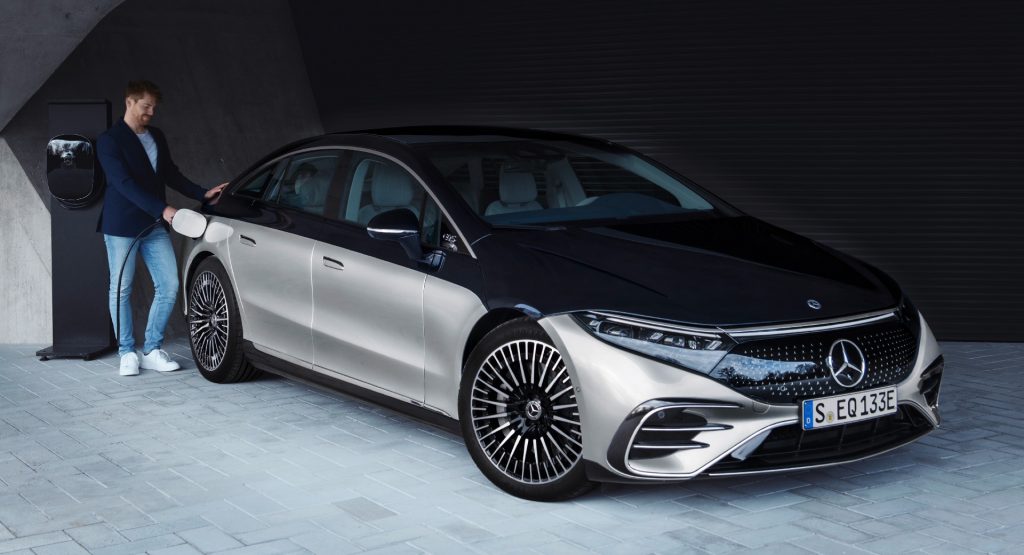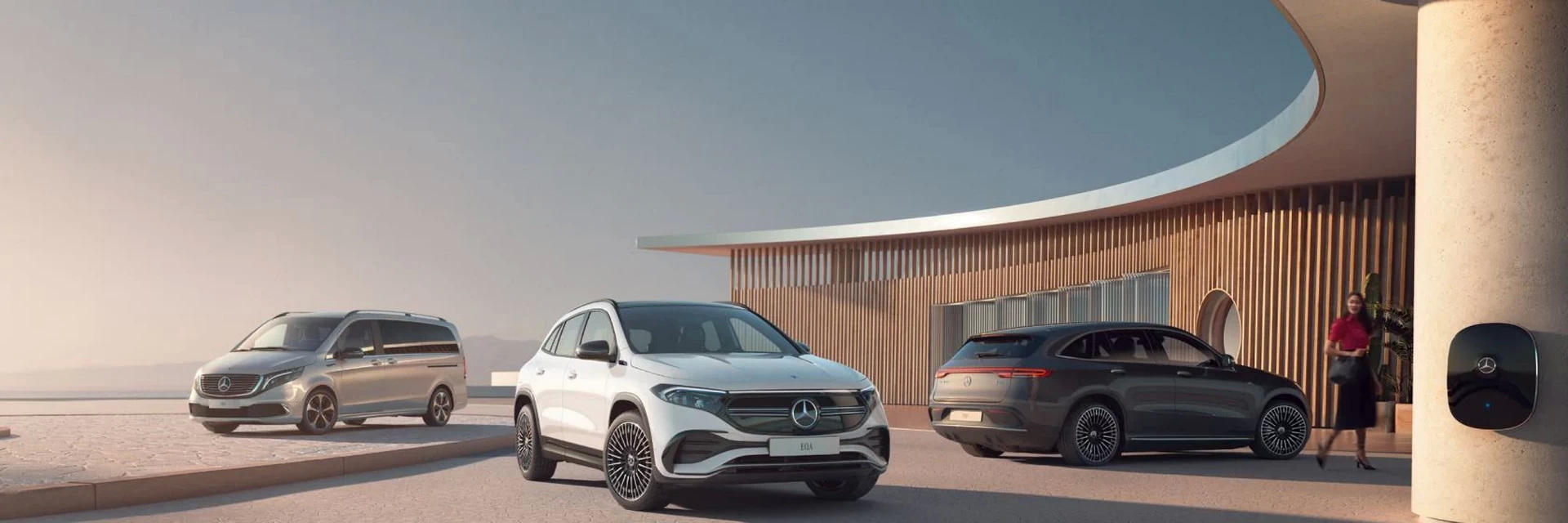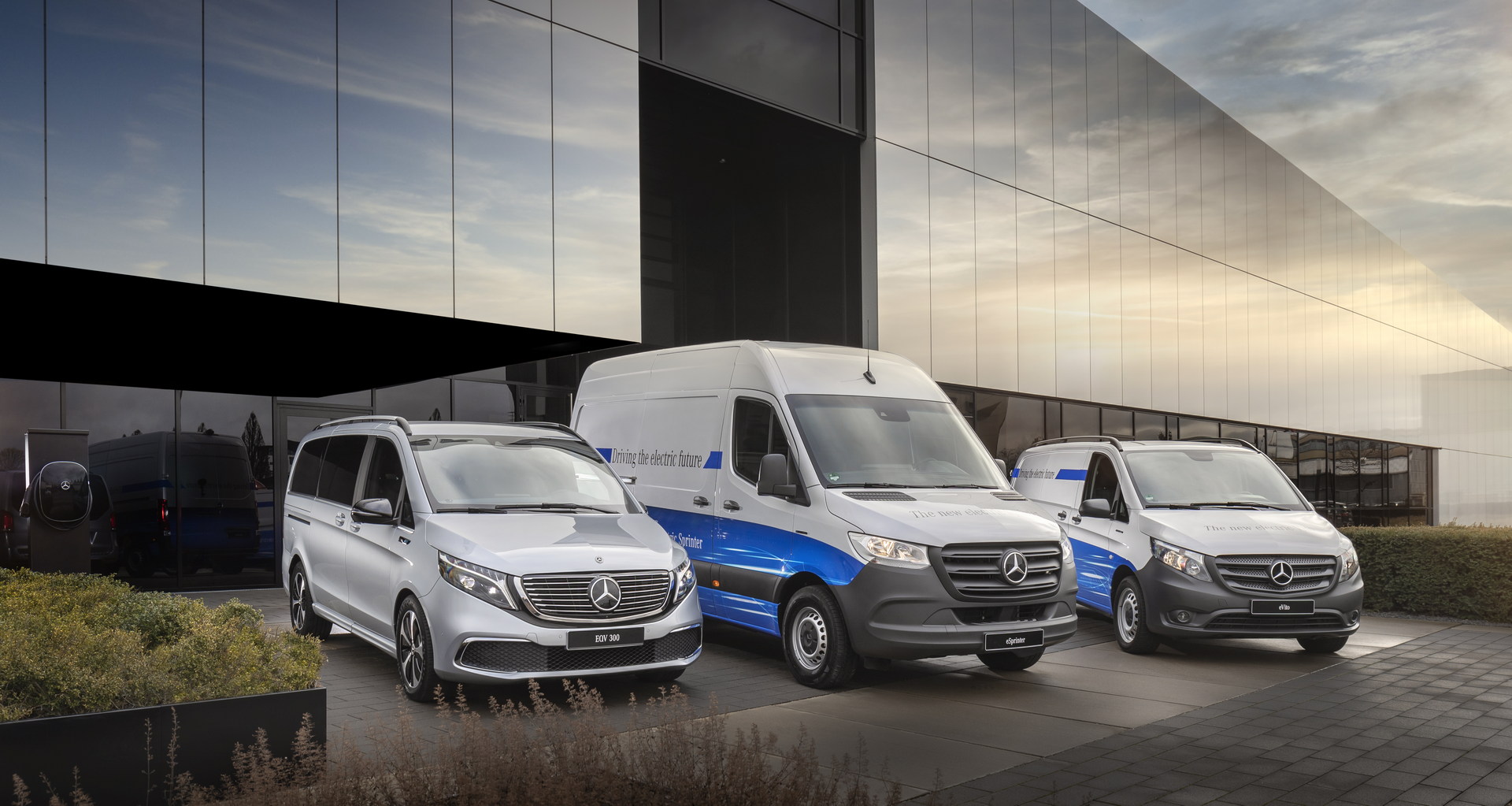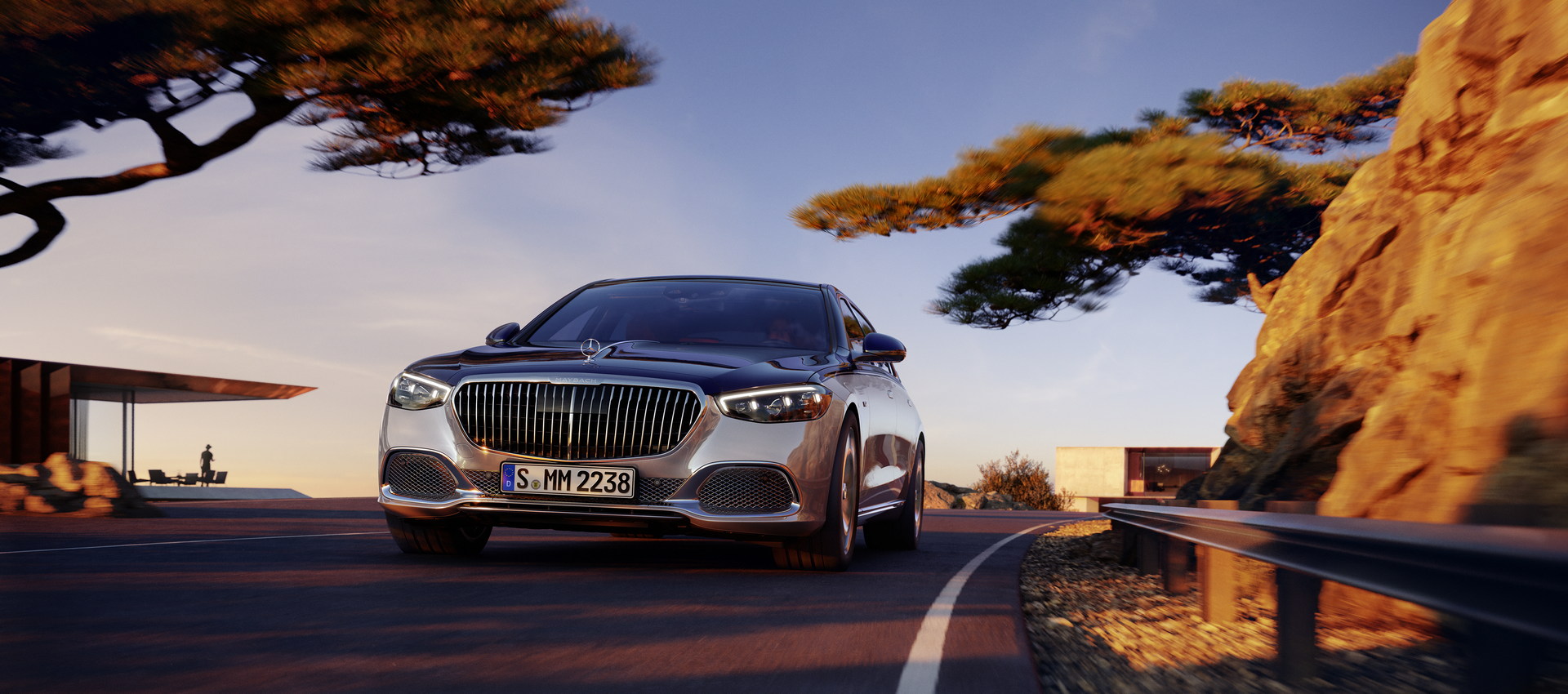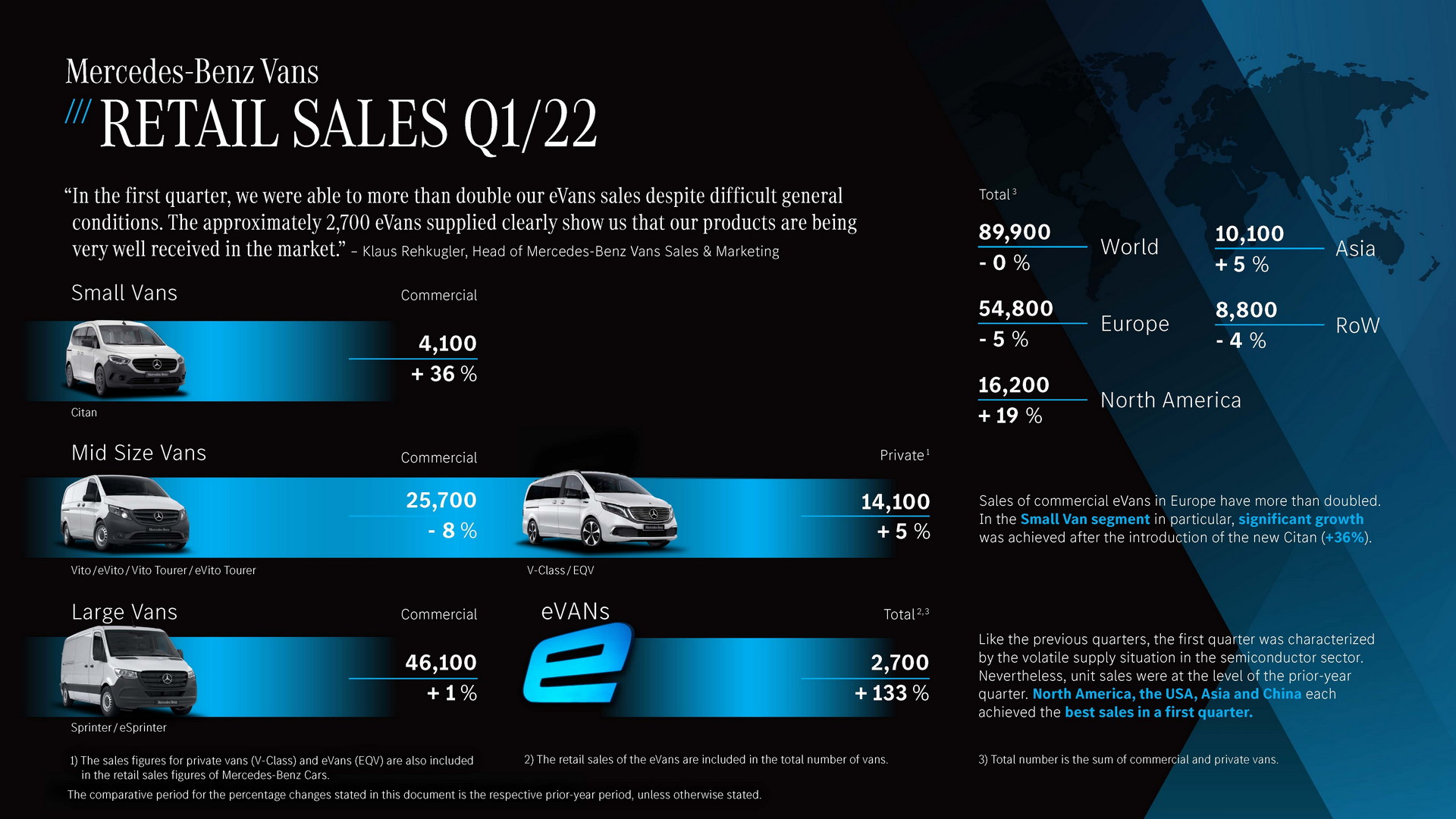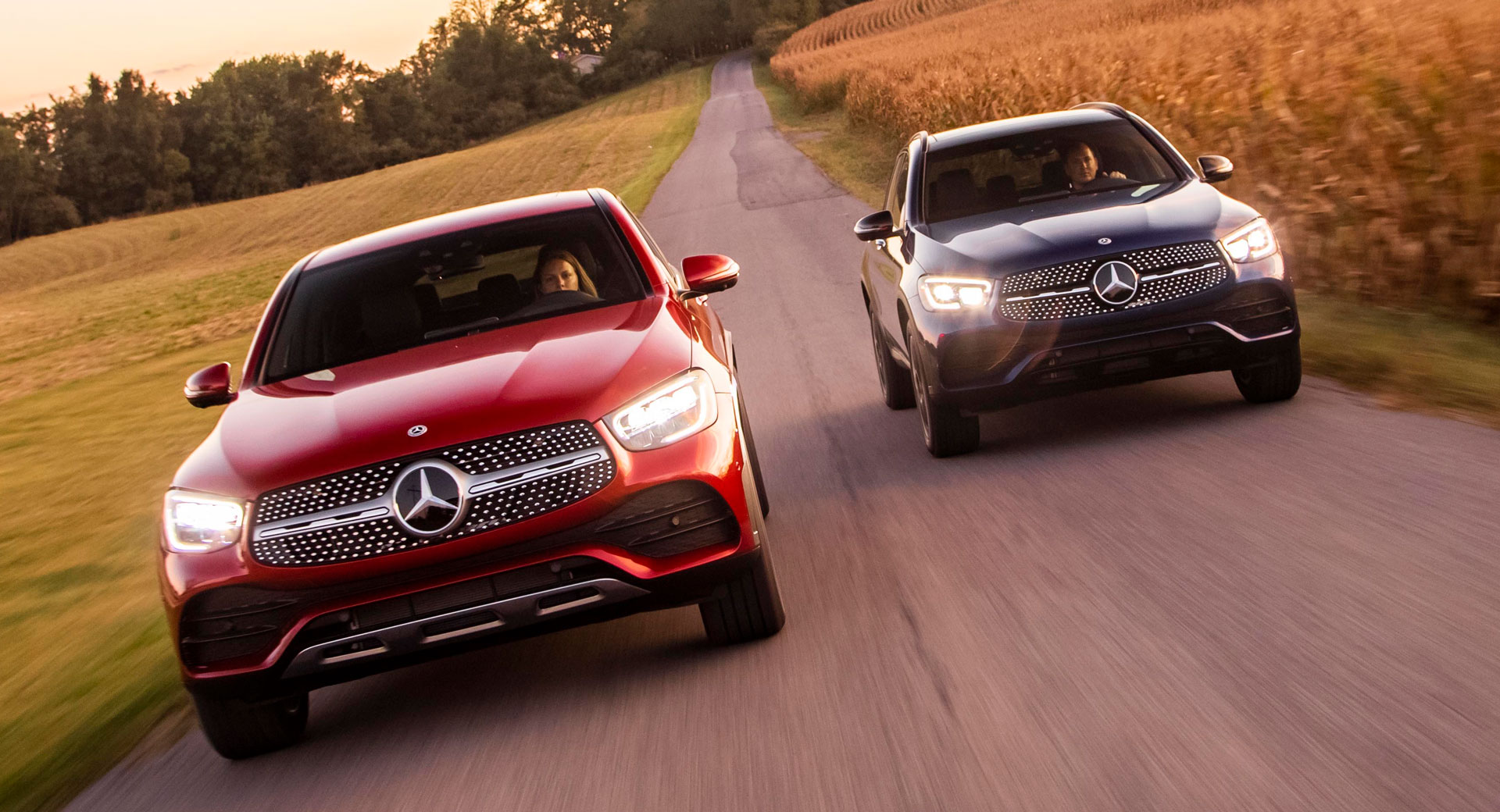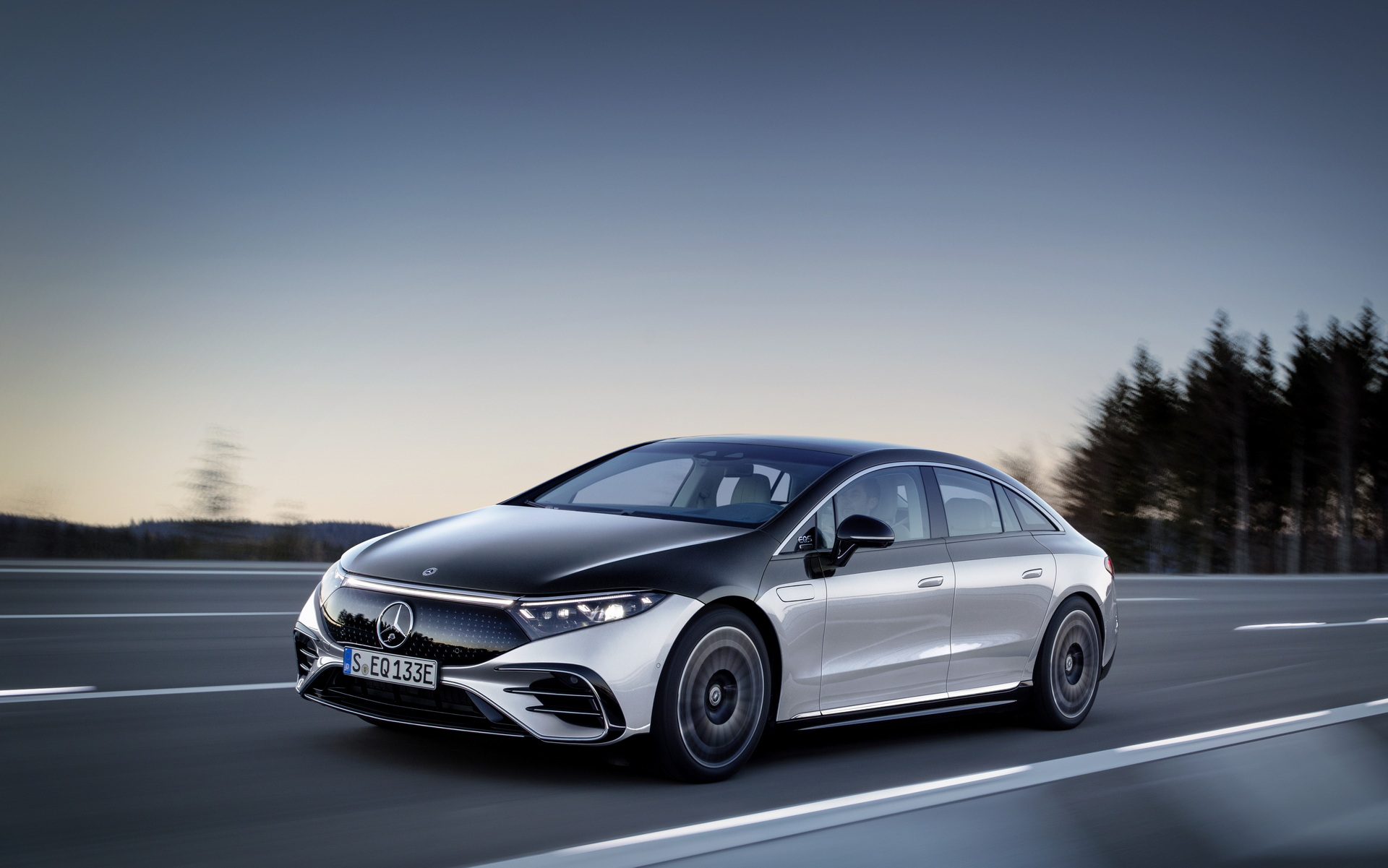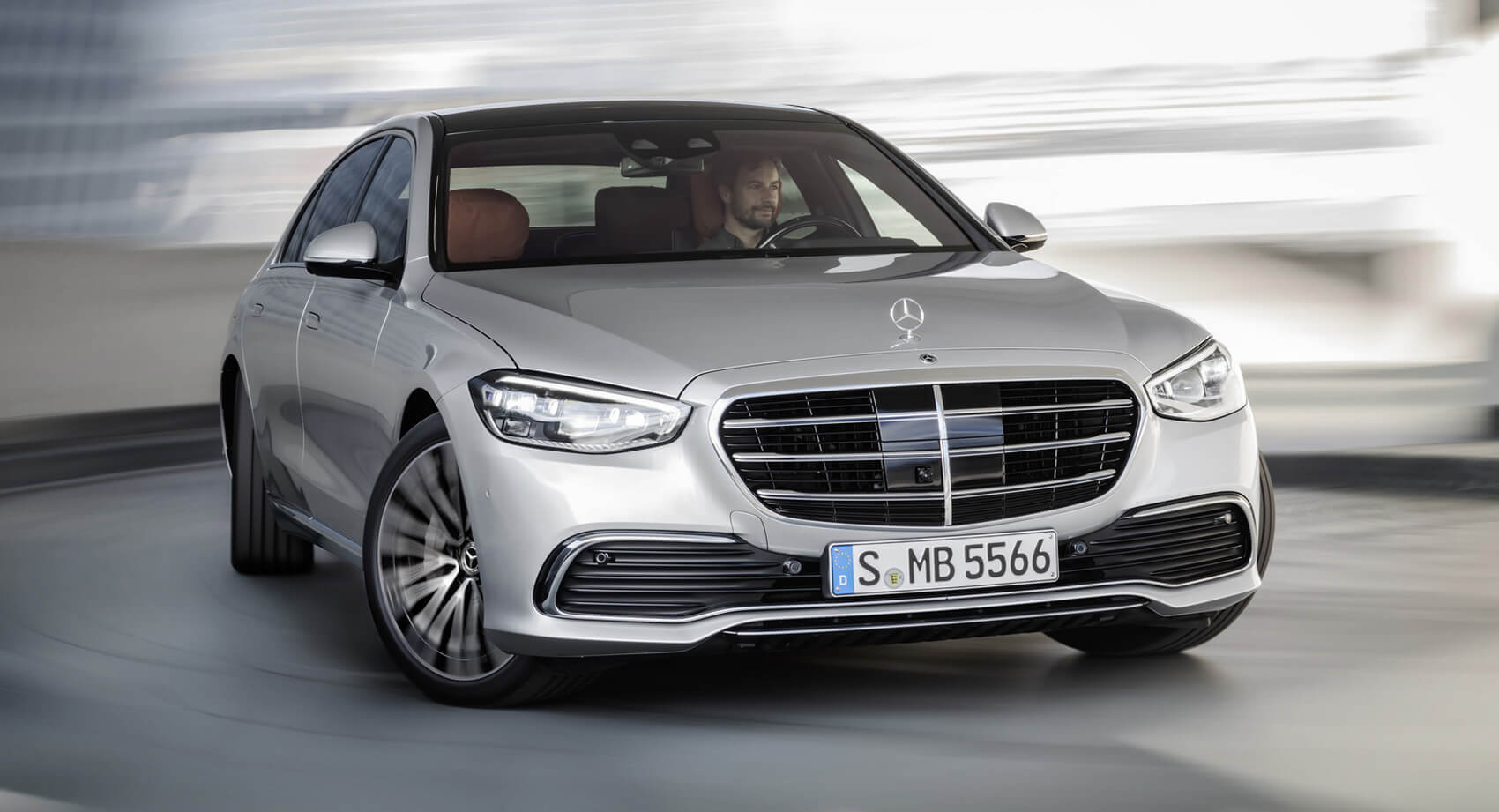Mercedes has shared data on its sales figures for the first quarter of 2022, and while the overall number of 501,600 units was 15 percent lower compared to 2021 due to the semiconductor shortage, it saw deliveries of fully electric vehicles triple over the same period the previous year.
More specifically, Mercedes sold 21,900 BEVs between January and March, representing an increase of 210 percent. The current EV range includes the EQA, EQB, and EQC SUVs, plus the EQE and EQS sedans but it will soon be expanded with the EQS SUV set to debut on April 19th. Sales of plug-in hybrid models increased by a modest 8 percent to 45,900 units. Adding PHEVs and BEVs deliveries make up for 15 percent of Mercedes’ global sales, and 33 percent of its European deliveries.
See Also: Mercedes-Benz Vision EQXX’s Tech To Applied On Production Cars
The best-selling Mercedes in the first quarter of 2022 was the GLC with 100,400 units sold, despite the fact that an all-new generation will premiere in June. However, the star of the brand was the S-Class flagship recording a 67 percent jump in sales, while the Mercedes-Maybach department increased deliveries by 161 percent. Overall, the high-end vehicles from AMG, Maybach, G-Class, S-Class, GLS, and EQS sold 76,200 units (+1%) for their best-ever quarter results, showing the growing demand despite the challenges.
Asia was the biggest market for Mercedes-Benz with 249,000 units (-12%), Europe followed with 151,000 units (-14%), while North America had 70,700 (-20%). Breaking down in countries, Mercedes sold 192,700 vehicles in China, 62,300 units in the United States, and 50,600 units in Germany.
Sales of Mercedes-Benz Vans remained stable with a total of 89,900 units including 75,900 (-1%) commercial vans and 2,700 (+133%) eVans. Fully electric variants of the Sprinter and the Vito more than doubled their market share in Europe, while global sales of the EQV also doubled in the same period. Finally, the growing demand for campervans helped increase sales of the Marco Polo range.
Mercedes says that global demand for its models remains strong, but they remain cautious for the future due to the unstable political environment, the semiconductor supply shortages, and the continued pandemic-related restrictions in some parts of the world.




